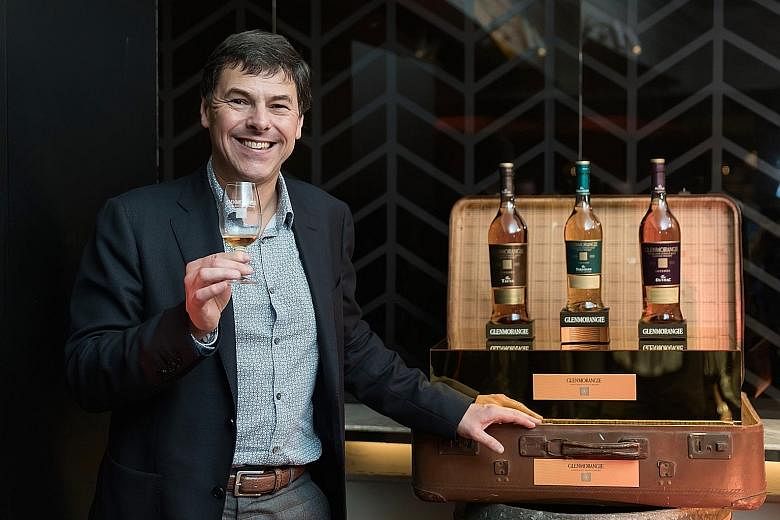Dr Bill Lumsden has more than 20 years of experience in the whisky industry, moving up the ranks from Glenmorangie distillery manager to his current role, where he is responsible for distilling, creating and managing the stock of whisky for the Glenmorangie and Ardbeg brands.
He considers himself a maverick in the industry, having pioneered techniques related to "wood management" using ex-wine, sherry and port casks to finish single-malt Scotch and impart new tastes to them.
But the 56-year-old Scotsman, who has a PhD in microbial physiology, is not quite done yet.
"Being a scientist means I'm naturally curious and inquisitive and have to find the answer to things. The Glenmorangie Company has given me free rein to do whatever I want - within reason," he says.
While scientific rigour underscores his techniques, he is not afraid to push the boundaries. "Some of the things I've done will most certainly contravene the Scotch Whisky Act," he says.
That cheeky sense of adventure is manifested in many of his creations, even though his name is attached to Glenmorangie and Ardbeg. Despite their long histories, neither is against the reimagining of their single malts through the application of new techniques by Dr Lumsden.
For instance, in Glenmorangie's Milsean from its private-edition collection, he took used wine barrels that were still moist with the residue of the wine and had them re-toasted to caramelise the wine on the inside of the barrels. The Scotch was then finished for 21/2 years in these barrels.
Traditionally, completely dried- out wine barrels are used for finishing Scotch whiskies.
"The Scotch Whisky Association wasn't particularly happy about that and the only reason they let me do it was because it was part of a limited series and I'm not going to do it again," he says with a shrug.
There are many other experiments he would like to carry out, including pursuing a cross-continental exchange of whiskies with Japanese and Taiwanese distilleries.
However, he is having trouble making headway with one of them - Taiwan's Kavalan distillery.
He explains that owing to the climatic conditions in Taiwan, most of Kavalan's output is bottled at a relatively young age of two to four years, and that if it kept its barrels for 10 years, the whisky would evaporate and there would be nothing left.
"I've said to them, 'Give me a container load of barrels with your whisky and I will mature them for you at Glenmorangie distillery warehouses and you will finally be able to achieve a 12-year-old,'" he says.
While Kavalan's master blender Ian Chang is keen, owner Lee Tien-tsai is not, adds Dr Lumsden.
"But I'm not going to give up," he says, with the same dogged determination that has probably seen him through his other experiments.
"I've got so many things on the go that hopefully will be bottled or see the light of day in the next five to 10 years," he says.
Experiments and innovation are part of the changes he has seen taking place in the industry. He believes they are not going to end any time soon.
"With the growth of whiskies in places such as India, Taiwan and Australia, it's a buzzing time in the industry."


